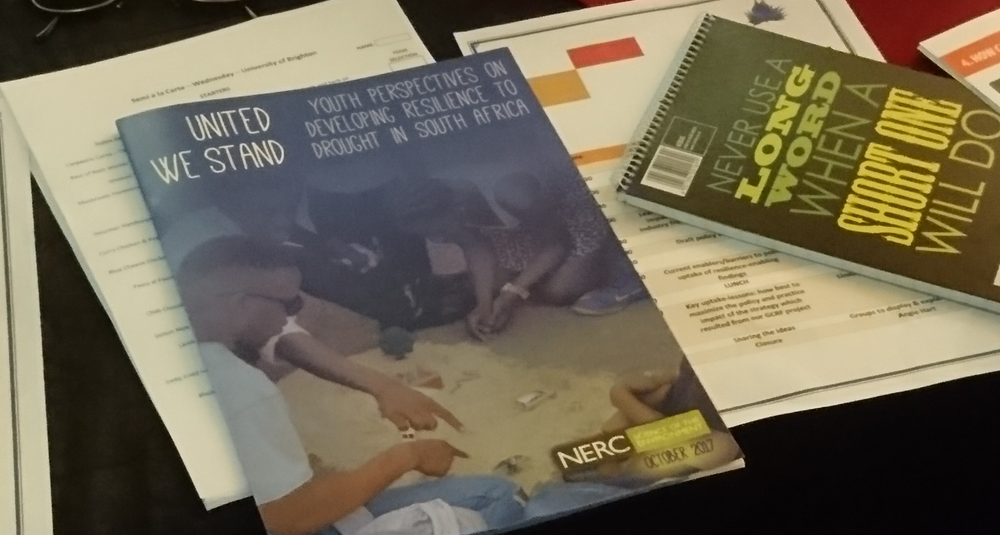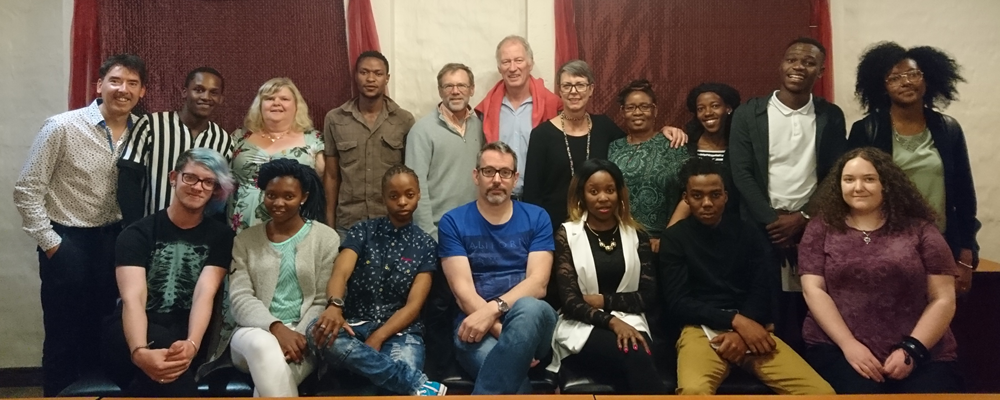Boingboing blogs from… South Africa
Final ‘Resilience to drought’ project visit – 4 & 5 October 2017
by Naz Biggs, Boingboinger
Younger Boingboinger Naz here. We are back in South Africa but, unfortunately, for the last time regarding our Resilience project. I cannot believe that our project has actually come to an end. It has been a privilege to be involved with and work alongside such fantastic and inspiring young people. It was eye opening to discuss and share aspects of our own (albeit very different) experiences of disadvantage. It was also inspiring to hear the young people speak with such passion about the changes they want to make in their communities that could improve resilience for future generations.
We had a two-day Think Tank styled event to discuss some of the outputs we had produced throughout the project, and think about future possible opportunities to collaborate. Day one mainly focused on the film and policy document that was created as part of our co-research process. To find out more about that please have a read of our Image film-making workshop in Leandra blog and Collaborative arts workshop in Leandra blog.

The first day of the Think Tank (Wednesday 4 October 2017) was exciting and productive. We had a mix of people in the room including professors and lecturers from South Africa, Canada and the United Kingdom, as well as young co-researchers from Leandra and Secunda. Mosna, the project manager, introduced the background to the film that was created based on our research project. She explained that she met with Khulisa Social Solutions – a not for profit organisation in South Africa that works with young people – and discussed which communities were most affected by drought. Khulisa suggested and advocated that we should work in Leandra. In Leandra, we used collaborative arts-based methods to collect data, and trained young people to collect data in their communities themselves. Once the data was collected, we worked alongside master’s students to do data analysis. Afterwards, we went back to the community to check the accuracy of the analysis we created with the young people. During these sessions engaging with the young people (who were now co-researchers) we asked them how they wanted the information to be displayed. They said they wanted a video. The video was a product of their work. We’re just polishing it off but it should be available soon. In the meantime here is a short clip about the process.

To go alongside the video we have been collaboratively creating a policy document. This is a booklet that summarises our project and also has ideas and recommendations for what the young people wanted for their communities to support resilience to drought. We had amazing discussions with the group around improvements that can be made to make sure we are having the best impact on our audience.

However, we began to realise that we needed to be clearer about who our audience was for the film and policy document. Professor Steve Reid from the University of Cape Town ran a small session that got us all thinking about the meaning of who a policy maker was. He said that we are all policy makers in our own right. While I think some of us agreed to some extent, we also felt that to have some structural and systemic changes to the issues young people faced in their communities we needed political policy makers to also be onboard. They would be the ones who could implement changes to infrastructure and have a big effect. For example, one of the challenges the young people (and other members of their communities) face is that sometimes pipes break in the community and water is lost. They also don’t have indoor taps in their homes. If infrastructure was improved to have a better piping system and indoor taps, this could improve their resilience in times of drought. If they had indoor taps, when there wasn’t a drought it would be easier to save water. At the moment they have to walk a distance to use the tap, which has a knock on effect. In some cases they have to wait in a long queue to use the taps, which means they could be late or miss school.

Our discussions moved onto the messages we wanted the film and policy document to have. We realised that we needed to ensure that they complemented each other and had the same core elements. We agreed that overall we wanted the policy document and film to reflect the following:
The main issues:
- Drought is a recurrent problem in the future
- Everyone needs to save water at every opportunity
- Schools are sometimes closed
- Jobs are at risk
- Young people want to be involved in decision making processes
Recommendations:
- In times of drought water should go to the schools first
- People need to be educated and have knowledge about drought
- Young people need to be involved and their voices need to be heard
- Young people have demonstrated the impact of drought on themselves, families and local community. So, government need to develop better water supply, infrastructure and planning (local and national). From tanks, to windmills and taps. Youth aspire to taps in their homes.
We thought that these points summarised our work well, even though we wanted to include a lot more. One thing we thought we really needed to reflect and improve on was the English used in the document. Some of the language was very formal. However, we agreed that we wanted the document to also be something that other young people and other members from the community could understand. We have to keep in mind that in some cases English could be their seventh language.

Day 2 of the Think Tank (Thursday 5 October 2017) focused more on possible collaborations for future projects. Although we know that we may not get the funding for new projects, we still wanted the initial stages to be a collaborative process and get the input of young people from both South Africa and other countries. I’m so excited about carrying on collaborating with young people from South Africa.
All in all the ending of the project was very sad, but a great success. All of the young people present said that they felt the whole project was life changing. They said that it had been very useful to have met people from overseas and that they were grateful to be included in the research process. They said that to actually feel valued and have their voices heard made them realise how they could make changes in their communities. One of the young co-researchers, Thato Vilakazi, said, “Meeting was pretty cool, I learned a lot. Things that I didn’t even think of I learned a lot on. Things like policy, I really liked it.”
It was a great experience to be involved in and hopefully, we can expand our reach and depth of co-production between youth in the UK and overseas with future projects. Now we just have to get cracking and polish off that policy document!




